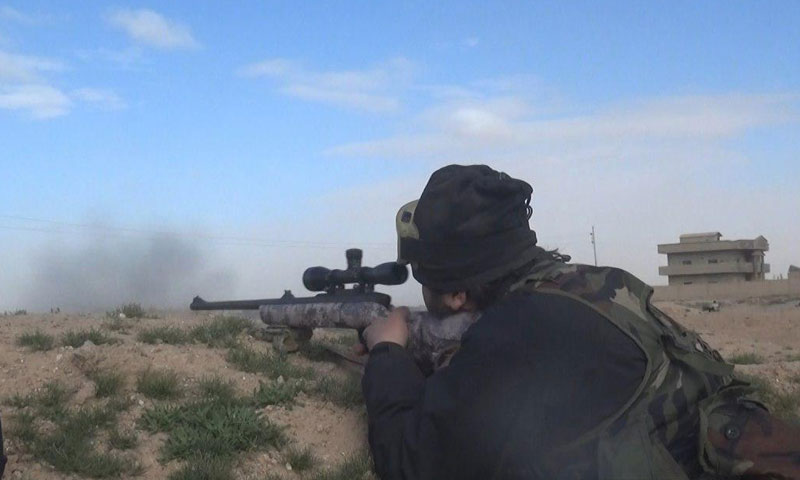With vengeful assaults and attacks in the areas of the “Autonomous Administration”, north-eastern Syria, deploying improvised explosive devices and suicidal attacks, the “Islamic State” (IS) has revived its control, retaliating after its ultimate defeat last March.
Under the “Avenging the al-Sham State Foray”, IS attacks targeted military posts and personnel of the “Syrian Democratic Forces” (SDF), positioned in Deir ez-Zor, al-Raqqa, al-Hasakah, and Manbij in rural Aleppo.
SDF commented on the attacks, saying that they are only expected, and attributed them to the “clandestine cells of the terrorist organization” in its areas of control, adding that it is dealing with them backed by the U.S.-led Coalition.
These developments came 20 days from the Kurdish forces’ declaration of the elimination of IS in the east of the Euphrates, Syria, after six months of military operations.
Extensive Retaliatory Attacks
In the past week, IS intensified its attacks, within a series of operations called “Avenging the al-Sham State Foray”, announcing the implementation of about 30 attacks, in Deir ez-Zor, al-Raqqa, al-Hasakah, and Manbij in rural Aleppo, during four days from the launch of its retaliation process, according to the latest issue of the al-Nabaa newspaper, affiliated with IS, which has been published on Thursday, April 5.
The newspaper, which Enab Baladi managed to have a look at, explained that the conducted operations have resulted with the death and injury of 45 militants in Deir z-Zor, 31 deaths and injuries in Raqqa, and other seven deaths and injuries in Manbij, in addition to deaths and injuries within the ranks of the U.S.-led coalition in rural al-Hasakah, according to IS estimations.
IS deployed improvised explosive devices in the majority of its attacks, while it bombed a car in the area of al-Shadadi in rural al-Hasakah, not to mention the skirmishes and the military targets it aimed at, which it reported on its official media outlets, particularly through Amaaq Agency, still using the word “states” to refer to the areas it once controlled.
These extensive attacks followed IS’ defeat in its last stronghold, in the town of al-Baghuz, east of the Euphrates, declared a few days ago, resorting, to initiate these assaults, to guerrilla warfare and surprise attacks.
IS’ current attacks provide an indicator to its cells in the eastern region of Syria, which can set the area into a different order, militarily and security wise while failing to impose an immediate state of stability.
Cells Ruining Victory’s Spoils
“The appearance of the clandestine cells of the terrorist Daesh organization is not a surprise; they have been there for a while, conducting terrorist attacks in different areas, inside Syria and in Iraq,” Rudaw Media Network reported, last Thursday, quoting Kino Gabriel, spokesman of SDF.
“This is an old matter and it is being addressed by the Syrian Democratic Forces and the Internal Security Forces, backed by the U.S.-led Coalition throughout the different stages of the process,” he added.
He also pointed out that the sleeper cells in these areas do not belong to IS only, for there are other sides and entities, which he did not name that are acting to shake the area’s stability and security and seeking to cause chaos, in addition to ruining the gains realized after the elimination of IS, preventing the civilians and the area’s population from resuming their normal life.
On March 23, SDF announced total control of the areas in the east of the Euphrates and the elimination of IS, backed by the U.S.-led Coalition.
Early in April, Mustafa Bali, SDF media official, said that his forces are uprooting IS-affiliated groups, which are hiding in caves in the town of al-Baghuz and near it.
Jiya Furat has earlier on told Reuters that SDF will soon shift to the next stage, which is “impeaching IS’ sleeper cells and its remaining forces, spreading in different areas as to secure these locations.”
On the same note, Sean Robertson, the Pentagon spokesperson, said: “While the completion of territorial liberation is a major milestone, we will continue to work by, with, and through our partners in Iraq and Syria to deny ISIS the opportunity to re-emerge.”











